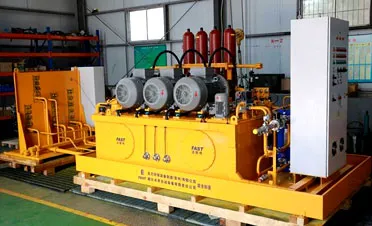die casting
The Art and Science of Die Casting
Die casting is a sophisticated manufacturing process that has become indispensable in various industries, particularly in automotive, aerospace, and electronics. This method involves forcing molten metal into a mold cavity under high pressure, yielding intricate shapes and high-dimensional accuracy. By leveraging the combination of art and science, die casting has evolved to meet the needs of modern engineering and design.
At its core, die casting can be categorized into two primary types hot chamber and cold chamber die casting. Hot chamber die casting is typically used for metals with low melting points, such as zinc and magnesium. In this method, the furnace is attached to the die casting machine, allowing molten metal to flow directly into a chamber from which it is injected into the mold. Cold chamber die casting, on the other hand, is more suitable for metals with higher melting points, like aluminum. Here, the molten metal is poured manually into the chamber before the injection process takes place, which prevents contamination and allows for precise temperature control.
The efficiency of the die casting process is further enhanced by the choice of materials. Alloys play a critical role; for instance, aluminum alloys are favored for their lightweight properties and excellent thermal conductivity. Zinc alloys are often employed due to their ability to form complex shapes while yielding a smooth surface finish. The selection of the appropriate alloy not only influences the mechanical properties of the final product but also impacts cost-effectiveness and production efficiency.
One of the key advantages of die casting is its ability to produce complex geometries with tight tolerances. This precision is crucial in industries where parts must fit together perfectly, such as in the assembly of automotive components. Furthermore, because die casting can achieve a high level of surface finish, the need for secondary operations, like machining or finishing, is often diminished. This represents significant savings in time and manufacturing costs.
die casting

Environmental sustainability is another area where die casting shines. The process is known for its minimal waste generation compared to other manufacturing methods. Scrap metal from the die casting process can be recycled and reused, reducing the overall material consumption. Additionally, advancements in technology, such as the use of electric die casting machines and the development of environmentally-friendly alloys, are driving efforts to make the process even more sustainable.
Moreover, innovation in die casting technology continues to push the boundaries of what is possible. The advent of computer-aided design (CAD) and computer-aided manufacturing (CAM) has revolutionized the way die casting molds are designed and produced. With the implementation of simulation software, engineers can predict how molten metal will flow into the molds, allowing them to optimize the designs for improved quality and to minimize defects. This not only boosts efficiency but also enhances the reliability of the final products.
The versatility of die casting has led to its application across various sectors. In the automotive industry, die cast components are used extensively, from engine blocks to transmission housings, fulfilling the demand for lightweight yet durable parts that can withstand rigorous conditions. In the electronics sector, die casting is employed to produce housings for complex devices, ensuring both protection and aesthetic appeal. Similarly, in the aerospace industry, where weight reduction is crucial, die-cast aluminum and magnesium components are increasingly utilized.
In conclusion, die casting is a remarkable hybrid of art and science that offers unparalleled benefits in modern manufacturing. As industries continue to evolve, the role of die casting will undoubtedly expand, driven by innovation and the ever-increasing demand for high-quality, precision-engineered components. With its ability to produce complex shapes, optimize material usage, and reduce waste, die casting stands as a pillar of sustainable manufacturing practices. As technology matures, the future of die casting looks promising, opening new avenues for product design and industrial applications.
-
OEM Sand Cast Pump Valve Fittings - Baoding Hairun Machinery And Equipment Trading Co., Ltd.NewsAug.01,2025
-
Custom OEM Impellers | High Efficiency & PrecisionNewsAug.01,2025
-
OEM Sand Cast Pump Valve Fittings - Baoding Hairun Machinery | Customization, Quality AssuranceNewsAug.01,2025
-
OEM Sand Cast Pump Valve Fittings - Baoding Hairun Machinery And Equipment Trading Co., Ltd.NewsAug.01,2025
-
OEM Sand Cast Pump Valve Fittings - Baoding Hairun Machinery And Equipment Trading Co., Ltd.NewsJul.31,2025
-
OEM Sand Cast Pump Valve Fittings - Baoding Hairun | Precision Engineering, CustomizableNewsJul.30,2025















